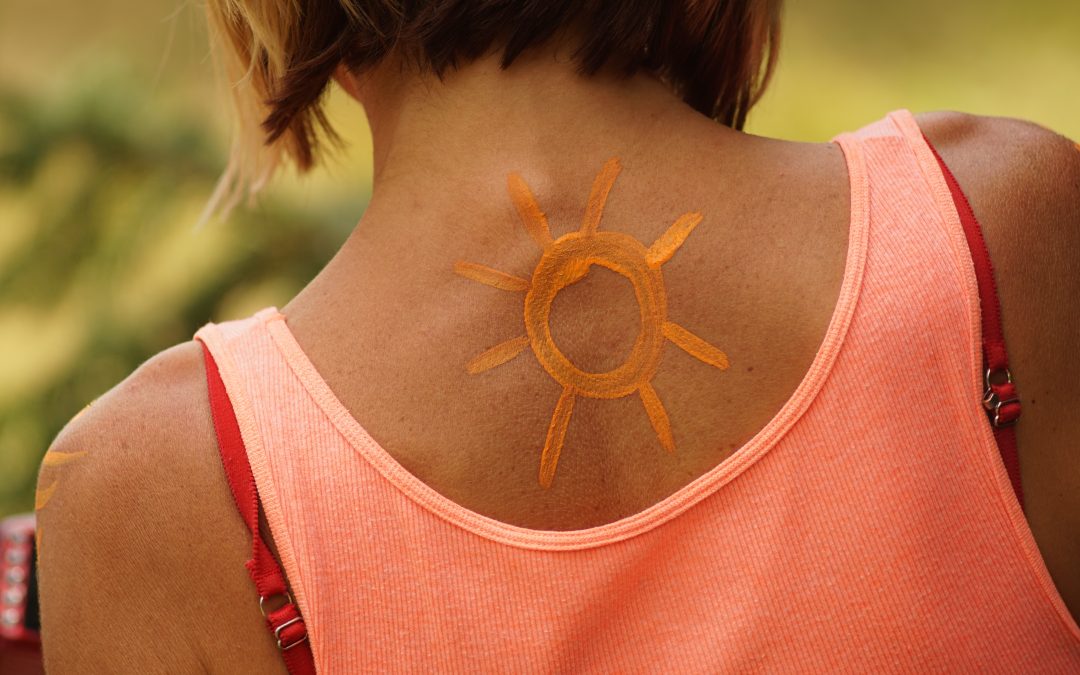As the sun shines brighter this July, it’s the perfect time to enjoy the outdoors — but also a crucial time to remember how harmful ultraviolet (UV) radiation can be. Whether you’re at the beach, in your garden, or just out for a stroll, the sun’s rays are always present — even on cloudy days.
Let’s break down what you need to know to stay safe.
What Is UV Radiation?
The Skin and Cancer Institute explains UV radiation this way:
“Ultraviolet radiation is a type of electromagnetic radiation that is invisible to the naked eye. It is made up of high-energy waves that can damage DNA and cause sunburns. It comes from the sun and can also come from artificial sources like tanning beds.”
There are two main categories of UV radiation:
- UVA rays – are longest and penetrate deep into the skin, causing premature aging and wrinkles.
- UVB rays – are shorter and affect the surface of the skin, causing sunburns.
Both types damage skin cells and increase the risk of skin cancer.
What are the Health Risks of UV Radiation?
Exposure to UV radiation may lead to:
- Sunburn
- Premature aging
- Skin cancer — the most common cancer in the U.S.
There are three main types of skin cancer:
- Basal cell carcinoma – the most common form (about 80% of cases), usually slow-growing and treatable.
- Squamous cell carcinoma – around 20% of cases, often on sun-exposed skin like the face, neck, or hands.
- Melanoma – the deadliest and most aggressive form. Though only 4% of skin cancers, it causes most skin cancer deaths.
UV radiation also puts your eyes at risk, contributing to:
- Cataracts
- Macular degeneration
- Ocular melanoma
Reflected UV: A Hidden Threat
According to SunSmart, UV rays can reflect off surfaces, especially those that are shiny, smooth, or light-colored — such as:
- Sand
- Water
- Concrete
- Snow
Why Snow Increases UV Exposure:
- High altitudes have thinner atmosphere, absorbing less UV. UV increases ~10–12% every 1000 meters.
- Fresh snow reflects up to 90% of UV rays, doubling exposure
Common Myths About UV Radiation
Myth 1: Cloudy days are safe.
Reality. UV rays are just as harmful on cloudy days as on sunny days. Up to 80% of UV rays can pass through clouds. So, it’s important to take precautions against UV exposure even on cloudy days.
Myth 2: People with dark skin don’t need to worry.
Reality. While melanin offers some protection as a natural higher SPF, people with darker skin can still develop sun damage, premature aging and skin cancer.
Myth 3: Sunscreen alone is enough.
Reality. Sunscreen helps, but it’s not a free pass — you still need shade, hats, clothing, and sunglasses to avoid excessive sun exposure.
The 5 S’s of Sun Safety
Adopt these simple protective habits:
- Slip on sun-protective clothing that covers your skin.
- Slop on a broad-spectrum (that protects against both UVA and UVB rays), water-resistant sunscreen with a minimum SPF 30+ and re-apply every 2 hours.
- Slap on a wide-brimmed hat to protect your face, neck and ears.
- Seek shade during peak sun hours (10 AM – 4 PM).
- Slide on UV-blocking sunglasses to protect your eyes.
Adopt these simple protective habits:
- Slip on sun-protective clothing that covers your skin.
- Slop on a broad-spectrum (that protects against both UVA and UVB rays), water-resistant sunscreen with a minimum SPF 30+ and re-apply every 2 hours.
- Slap on a wide-brimmed hat to protect your face, neck and ears.
- Seek shade during peak sun hours (10 AM – 4 PM).
- Slide on UV-blocking sunglasses to protect your eyes.
Skin Self-Checks: Stay One Step Ahead
Inspect your skin monthly. Here’s how:
- Examine your entire body using a mirror in a well-lit room. Look for new or changing moles, red or scaly spots, or anything bleeding.
- Pay special attention to areas exposed to the sun including face, neck, chest and arms as well as back, legs and feet.
- See a dermatologist immediately if you spot anything suspicious.
Annual Dermatologist Visits Matter
Even if nothing looks wrong, UV damage builds silently. Dermatologists can:
- Spot early signs of precancerous changes
- Offer treatment plans
- Recommend products and routines for better skin health
Final Reminder
You don’t have to avoid the sun — just be smart about it. Awareness, protective habits, and regular skin checks can go a long way toward preventing serious health issues.
Stay protected. Stay informed. Stay healthy.
Sources:
- Skin and Cancer Institute. (n.d.). July is UV Safety Month. Retrieved July 10, 2025, from https://skinandcancerinstitute.com/july-is-uv-safety-month/
- SunSmart. (n.d.). Ultraviolet (UV) radiation. Cancer Council Victoria. Retrieved July 10, 2025, from https://www.sunsmart.com.au/uv-radiation
Disclaimer:
The content provided in this article is for informational and educational purposes only and is not intended as medical advice, diagnosis, or treatment. Always consult a qualified healthcare professional before making any changes to your health regimen, starting new therapies, or discontinuing existing treatments. Mention of specific practices, therapies, or organizations does not constitute an endorsement. The views expressed are those of the author and may not reflect the policies or positions of any affiliated entities.

